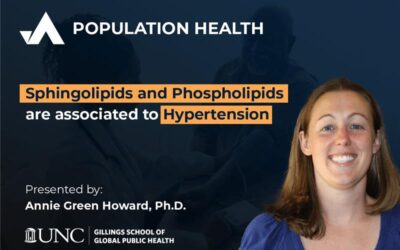VIDEO
Understanding Cataractogenesis in Atlantic Salmon and Rainbow Trout with Metabolomics
Listen to Alessandro Busetti, Ph.D. outline a case study showcasing metabolomics’ ability to add value and insight to biological questions spanning from animal health and nutrition all the way to disease characterization.
Video Transcript
Introduction
Hello everyone, my name is Alessandro Busetti and I am one of the Field Application Scientists on Metabolon’s International Business Team. The study I would like to present to you today is a study on cataract development in salmonid fish. The beauty of this study is that it showcases metabolomics’ ability to add value and insight to biological topics spanning from animal health and nutrition all the way to disease characterization.
About this study
Now what is the background of this study? Simply put, the demand for Fish is growing -Wild fish stocks are depleted- Intensive Aquaculture is now a reality, I would say a booming economic sector- Several farmed salmonid species suffer from a higher Cataract development-
Why, how, how is the diet involved what do cataracts derive from- these are just some of the questions that this study addressed and that metabolomics contributed in answering.
I hope you enjoy.
Study Details
The study was published in PLOS ONE in April 2017 BY Remø et al., and the title is “Lens metabolomic profiling as a tool to understand cataractogenesis in Atlantic salmon and rainbow trout reared at optimum and high temperature.”
Researchers examined cataract development in Atlantic salmon and rainbow trout reared at optimum and high temperature. So, what they did was to obtain global metabolic profiles in lenses from Atlantic salmon and rainbow trout to investigate differences in lens metabolism between the species and study metabolic changes in the lenses caused by water temperature.
And I would like to take this opportunity to stress our experience working with more than 100 matrices- not just the most common ones like plasma- so in this case fish lenses…
In the present study, the first things the researchers confirmed was that the cataract prevalence and the severity of cataracts were significantly higher in Atlantic salmon compared to rainbow trout despite equal farming and feeding conditions.
As you can see in the two graphs in the MIDDLE of the slide,
At the start of the experiment, the Atlantic salmon had a cataract prevalence of 70% and the cataract score was low grade with mean 1.3 ± 0.2 (n = 30). At the end of the 35 days experiment all the Atlantic salmon reared at 13°C had developed cataracts (prevalence of 100%), and the severity had increased to a mean cataract score of 3.2 ± 0.3.
Rearing temperature had no effect on the final prevalence and severity of cataracts.
The rainbow trout had a cataract prevalence of 10% at the start of the experiment (n = 30), and the mean cataract score was 0.10 ± 0.06. At the end of the experiment the prevalence of cataract was 53 ± 5% and 67 ± 4% in rainbow trout reared at 13°C and 19°C,
The lens metabolic profile differed between the species, where several metabolites that are associated with cataract development were present at different levels in Atlantic salmon and rainbow trout.
Study Interpretation
While these differences may be related to cataract severity, only a few of these were related to the cataract scores. Thus, the lens metabolic profiles likely indicate differences in lens metabolism that may explain or is the consequence of the higher susceptibility to cataracts for Atlantic salmon.
A major difference between the species was seen in the histidine metabolism- in fact quantification of histidine and NAH confirmed a higher concentration of both histidine and NAH (N-acetyl-l-histidine) in the rainbow trout compared to Atlantic salmon lenses.
Sub-optimal levels of dietary histidine has been identified as a major risk factor for cataract development in farmed Atlantic salmon, and cataracts can be mitigated by increasing the dietary histidine concentration [7,19,20]. The cataract mitigating effect of dietary histidine has been attributed to the synthesis and concentration of NAH in the lens [20, 36]. The concentration of NAH in Atlantic salmon lenses has been shown to reflect the dietary histidine concentration, and a low level of NAH is therefore considered a marker for the risk for cataract development.
In the present study, both species were fed the same diet (which is in the upper left-hand corner), designed to cover the dietary amino acid requirements for growth for both species, with a dietary histidine concentration of 10 g His kg-1 feed. This concentration is however lower than the re-established requirement of 13.4 g His kg-1 feed to minimize the risk of cataract development for Atlantic salmon smolt after seawater transfer [20], and this may explain both the severity of cataracts and the almost depleted lens NAH concentration in Atlantic salmon in the present study. In comparison, the rainbow trout was able to maintain a higher lens NAH concentration, with lens NAH constituting approx. one third of the free amino acid pool, when given the same dietary histidine concentration. This clearly indicates differences in the metabolism as well as possibly also requirements for histidine between the species. The dietary histidine concentration was almost twice the estimated histidine requirement for growth for rainbow trout of 5–6 g His kg-1 dry matter [37], and this appeared to be sufficient to maintain a cataract preventive concentration of lens NAH. Thus, the observed difference in cataract development between the species may be explained by a different requirement or metabolism of histidine, with levels resulting in a higher susceptibility to cataracts for Atlantic salmon, regardless of rearing temperature.
Study Insights
Now, NAH has been shown to function as an osmolyte in the fish lens thereby contributing to maintaining the water balance and volume regulation.
So, the depleted level of NAH in the salmon lens indicates that the lens’ ability to osmoregulate was lowered, while the high concentrations in the rainbow trout suggest a stronger standing defense against shifts in osmolality, and thus possibly a lower susceptibility to cataracts.
Osmotic cataracts in Atlantic salmon are usually associated with reduced osmoregulatory abilities after seawater transfer. The level of N-acetyl aspartate (NAA), an analogue osmolyte to NAH in the brain was present at lower levels in both rainbow trout and Atlantic salmon reared at 19°C compared to 13°C. Together with the reduced concentration of NAH in the rainbow trout lenses reared at high temperature this suggests an increased usage of osmolytes at high temperature. In addition, the Atlantic salmon lenses had lower levels of NAA in lenses with a high cataract score, supporting a connection between the lens’ ability to osmoregulate and cataract formation.
Lens GSH metabolism.
GSH is an important innate antioxidant in the lens, and a low concentration is associated with cataract development in animals and humans. As a response to oxidative stress, cellular GSH levels are expected to be lowered, as found in cataractous lenses in vivo.
Many significant changes were observed in Lens GSH metabolism.
For example, Ophtalmate, a structural analogue of GSH [67], was present at higher levels in both Atlantic salmon and rainbow trout exposed to 19°C, and at higher levels in Atlantic salmon compared to rainbow trout. Ophtalmate has been suggested to be a biomarker for hepatic GSH depletion in humans, and thus a marker for oxidative stress [68
Ophtalmate may be a useful marker to assess oxidative stress in lenses.
Several intermediates in the transmethylation pathway of the 1-carbon metabolism were present at different levels in rainbow trout and Atlantic salmon, and Atlantic salmon reared at 19°C had significantly higher levels of S-adenosylmethionine (SAM) and S-adenosylhomocysteine (SAH) compared to salmon reared at 13°C
Now very important, Lens lipid metabolism.
The concentration of total lipids in Atlantic salmon lenses is approximately 5 mg g-1 wet weight and the lipid class composition indicates that the main function of lens lipids are for structural purposes and messengers, as opposed to energy, with an abundance of phospholipids and cholesterol [23]. In the present study, Atlantic salmon lenses had a higher level of sphingosine, an intermediate in the ceramide synthesis, compared to rainbow trout, and this may be related to the higher severity of cataracts in the salmon. Ceramide has many physiological functions beyond being a component in the membrane structure, among others in signalling, cell functions and apoptosis [42]. High levels of ceramide have been found in human cataractous lenses [43], and have been suggested to be part of the aetiology of human age-related cataracts [44].
The Atlantic salmon lenses had a higher level of non-esterified arachidonic acid (20:4n-6, ARA) and prostaglandin E2 (PGE2) compared to rainbow trout. This may be a result of the more severe damage to
the Atlantic salmon lenses, resulting in a release of ARA from the cell membranes and thus a higher production of PGE2. Prostaglandins are involved in several biological functions that may influence cataract formation such as regulation of cell proliferation [45], inflammation processes in lens epithelial cells from cataract patients [46] and osmoregulation [47]. Thus, the higher levels in Atlantic salmon compared to rainbow trout may be related to the higher severity of cataracts in salmon, however the exact mechanism or cause-effect relationship is not known.
Osmotic cataracts have also been associated with elevated plasma glucose concentrations in Atlantic salmon [26]. the plasma glucose concentration was significantly higher in Atlantic salmon reared at 19°C compared to 13°C [3]. Although no differences were observed in the lens glucose levels at the end of the experiment, differences observed in intermediates in the glucose breakdown pathways suggest a temperature dependent dysfunction or an overload of glycolysis in the Atlantic salmon lenses. The higher level of sorbitol in Atlantic salmon lenses reared at 19°C may have resulted in osmotic stress and consequently contributed to cataract formation, as seen in hyperglycaemic animals and humans [50, 51]. The level of fructose and glucose increased with increasing cataract score in rainbow trout lenses, suggesting that alterations in the glucose metabolism may be related to the observed cataract development in rainbow trout.
Summary
In summary, Atlantic salmon was more susceptible to cataract development than rainbow trout under the given similar rearing conditions.
The difference in histidine metabolism may explain the apparent difference in cataract susceptibility between the species.
However, almost 50% of the rainbow trout developed cataract at both temperatures, suggesting that other factors may be involved in the aetiology of cataracts in rainbow trout, such as the observed effects in the carbohydrate metabolism.
Rearing temperature did not increase the cataract development significantly in either species during the 35-day experiment; however, the metabolic profile indicates that high temperature alters the osmoregulatory ability, carbohydrate metabolism and redox regulation in the lenses, which may result in a higher risk for cataract development.
References:
1. Remø SC, Hevrøy EM, Breck O, Olsvik PA, Waagbø R. Lens metabolomic profiling as a tool to understand cataractogenesis in Atlantic salmon and rainbow trout reared at optimum and high temperature. PLoS One. 2017 Apr 18;12(4):e0175491. doi: 10.1371/journal.pone.0175491. PMID: 28419112; PMCID: PMC5395160.




